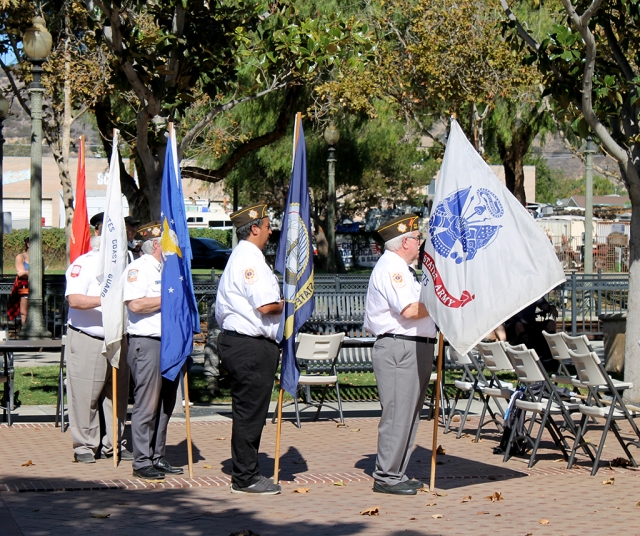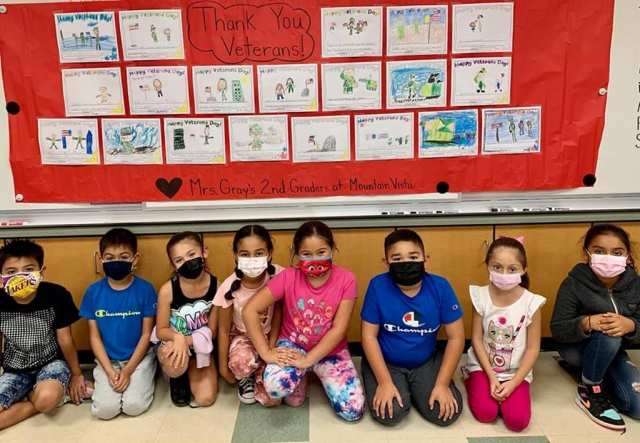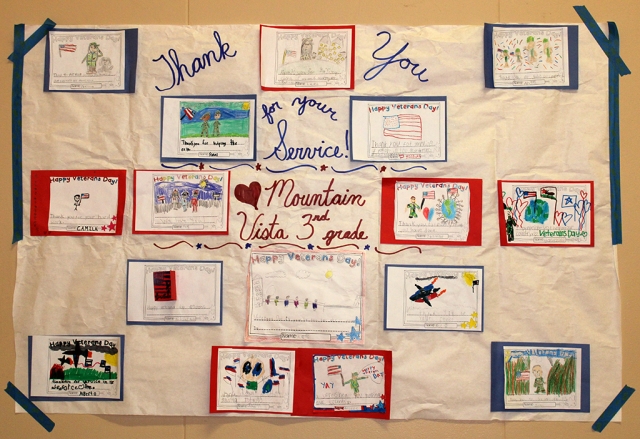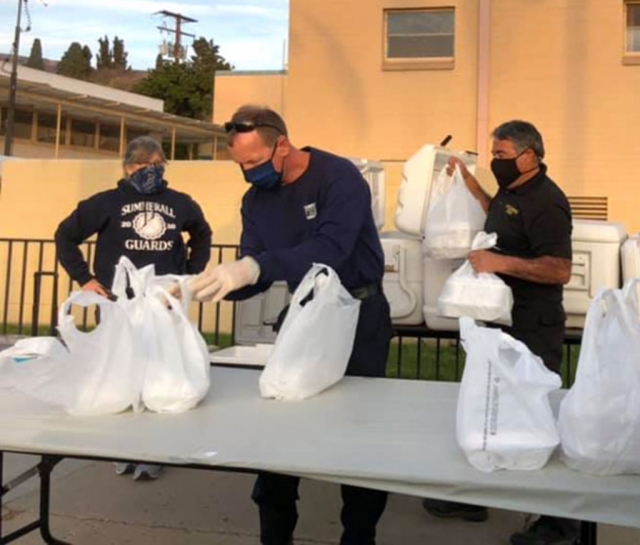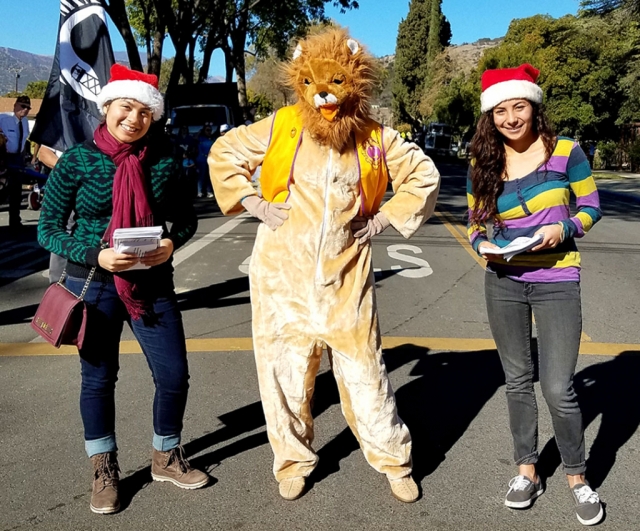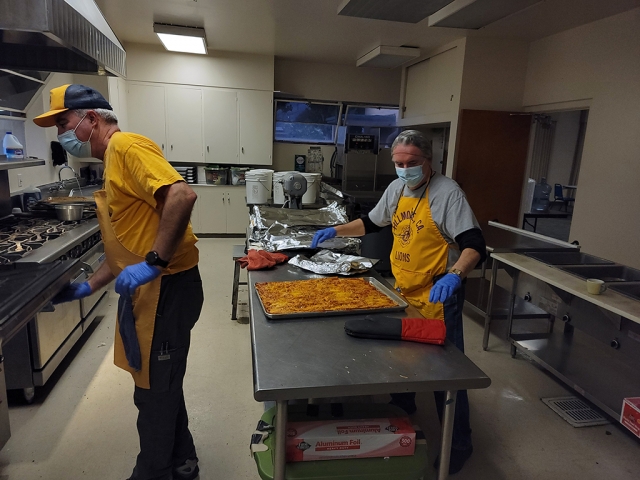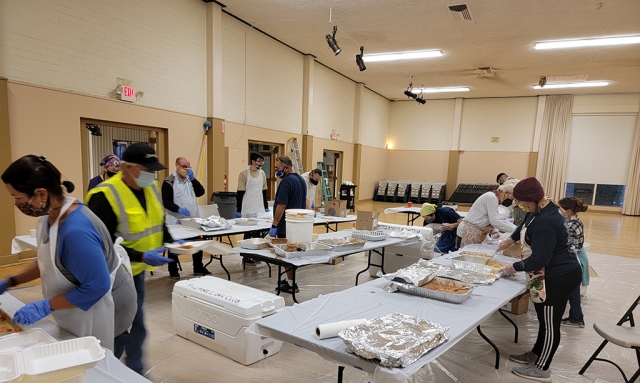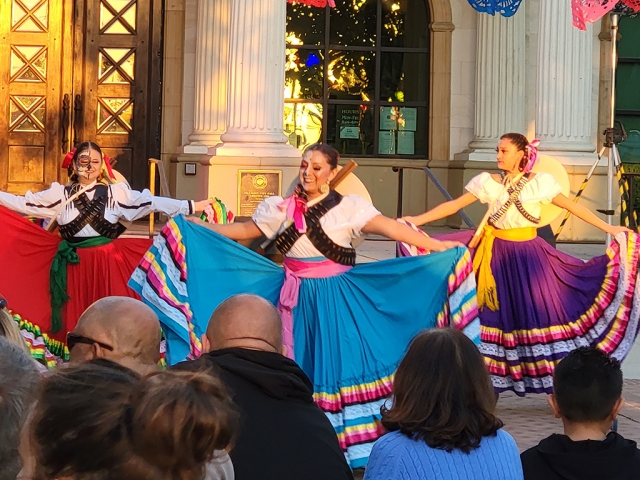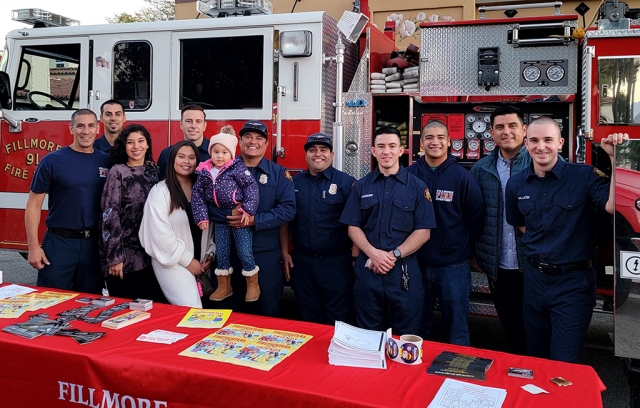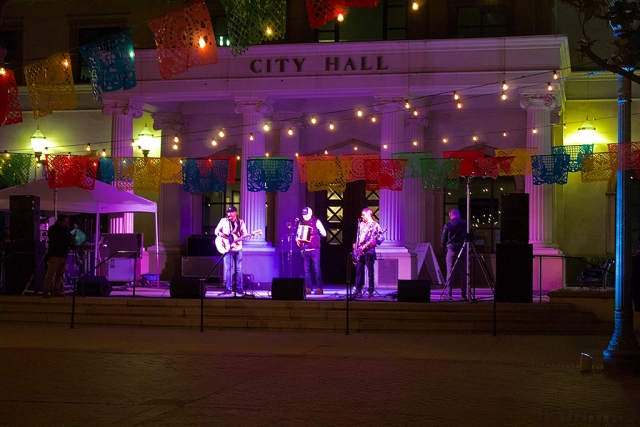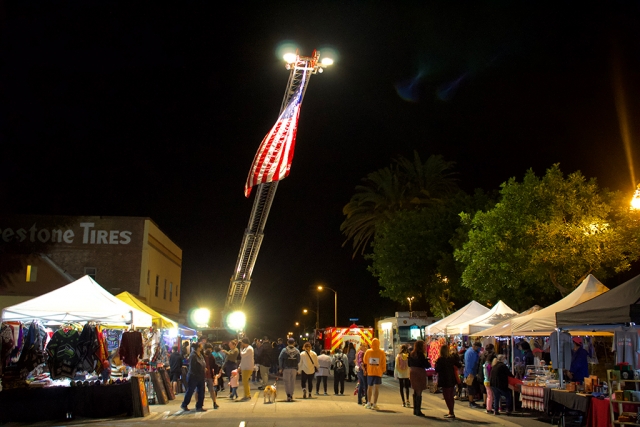|
By Gazette Staff Writers — Wednesday, November 17th, 2021
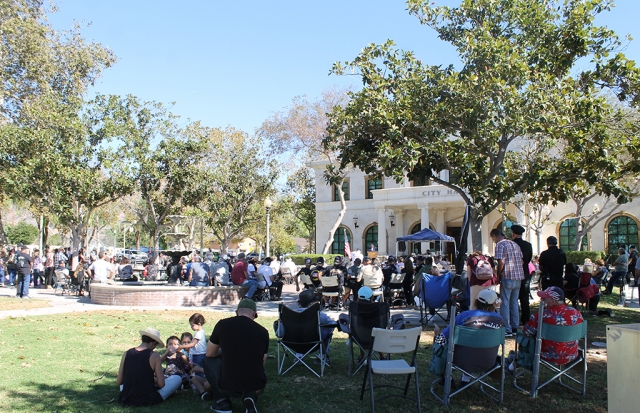 In front of Fillmore City Hall crowds of Veterans along with residents came out to show their respect to our Hero’s at the Veterans Day Ceremony. Each military branch was recognized. In attendance were speakers John Munoz of Fillmore who spoke about helping fellow veterans, and Deej Fuentes of Camarillo who spoke of her service in the Marines. Also in attendance for the ceremony were the Fillmore Police and Fire Departments, Fillmore City Council, Fillmore VFW Post 9637 and more. Enlarge Photo |
|
By Gazette Staff Writers — Wednesday, November 17th, 2021
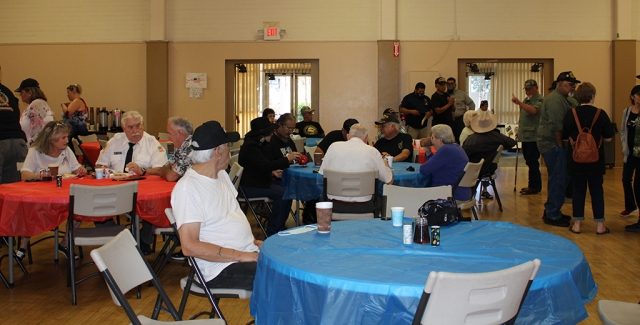 On Thursday, November 11th, before the Veterans Day Parade, a pancake breakfast was held for Veteran’s and their spouses to enjoy at the Fillmore-Piru Veterans Memorial Building. Inside, walls were decorated with signs from Fillmore students. One of the signs read “Thank You for Your Service!” from the 3rd graders at Mountain Vista. Enlarge Photo |
|
By Gazette Staff Writers — Wednesday, November 17th, 2021
Courtesy Fillmore Fire Department |
|
By Gazette Staff Writers — Wednesday, November 17th, 2021
This year’s annual Fillmore Community Holiday Giveaway will be held Saturday, December 11th from 9 AM – 12 PM at Two Rivers Park, the corner of River St and “D” St. This is the annual event where holiday commodities are given to the children who reside within the Fillmore Unified School District boundaries. Due to COVID-19 restrictions, the location and format of the Giveaway has changed. This event will be a drive-thru, contactless format. Anyone wishing to receive holiday commodities must preregister prior to December 6th. The age and gender of each child will need to be included so that age appropriate toys, reading books and socks may be pre-package for pick up. Because of COVID-19 restrictions, personal sizing of coats will not be available, instead, nice warm individual blankets will be distributed to each child. As is customary, a holiday bag of groceries will also be available. To ensure that Santa is well for Christmas delivery of toys, he will only be available to wave at the children from a distance this year. Everyone must remain in their vehicle. To preregister for the Holiday Giveaway go to the City of Fillmore website at www.fillmoreca.com/Home/Components/News , you must provide proof of residency within the School District. Annual sponsors of the event include our local Fillmore Police and Fire Departments, Santa Clara Valley Legal Aid, One Step A La Vez, Soroptimist International of Fillmore, Rotary International of Fillmore, Fillmore Lions Club, Ventura County Deputy Sheriff’s Association, Fillmore Citizen’s Patrol, Fillmore Women’s Service Club, Fillmore Friends of the Library, Super A, The Fillmore Fire Foundation and numerous other generous personal and business donors. Our sponsor list will be updated week to week. If you would like to help donate to the Fillmore Community Holiday Giveaway, you may give new toys, socks, reading books or canned food; drop boxes are located at the Fillmore Police Station and at the Fillmore City Fire Station. Monetary donations are preferred this year to reduce person to person contact, checks may be made out to “The Fillmore Fire Foundation” with a notation of “Holiday Giveaway”. Donations may be mailed to Fillmore Fire Foundation, PO Box 331, Fillmore , CA 93016 or for drop off, please contact Scott Beylik (805) 732-1101 or Keith Gurrola (805) 558-0932. |
|
By Gazette Staff Writers — Wednesday, November 17th, 2021
Don’t forget to join in the Fillmore Lions Club Christmas Parade coming up in December. Parade participant applications can be found on their website: www.fillmorelionsclub.org. |
|
By Gazette Staff Writers — Wednesday, November 10th, 2021
On Thursday, November 11th, in honor of Veterans Day, Fillmore will celebrate with the traditional Veteran’s Day breakfast at the Fillmore Piru Veterans Memorial Building. The Veterans Day Parade rolled down Central Avenue, with a ceremony following at Fillmore City Hall. On Saturday, November 13th, from 10am to 5pm, a Veterans Day car show will be held on Central Avenue, hosted by the Sespe Creek Car Club. These events are sponsored by the City of Fillmore, Fillmore Lions Club, Fillmore Rotary Club, Fillmore VFW, Piru Neighborhood Council, Knights of Columbus, Soroptimist Club, Villegas Public Affairs, Union Bank and Sespe Creek Car Club. |
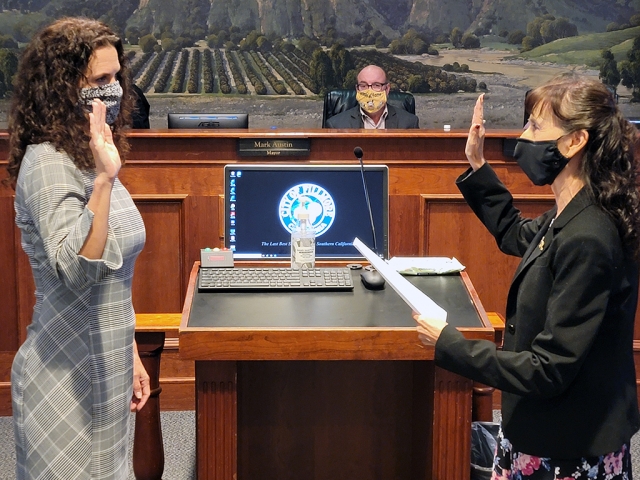 Fillmore City Council Member Simone Alex was sworn in at last night's council meeting. Alex was appointed to serve until the next election. Enlarge Photo By Gazette Staff Writers — Wednesday, November 10th, 2021
The oath of appointment of Council Member Simone Alex was heard and she took her place on the Council. The Trunk or Treat People's Choice Award was tabled until the next meeting. A Proclamation declaring November 2021 Native American Heritage Month in the City of Fillmore was read by Mayor Mark Austin. Emergency repairs to Well #8. Most of the items which remained to be completed are now finished. Sanding content reduced to an acceptable level. New equipment has been installed. Water samples being taken to confirm purity acceptable. Well up and running Monday or Tuesday of next week. Hope to declare emergency over by December 14. Parking on Hwy. 126: City Engineer Roxanne Hughes updated Caltrans agreement with City for restrictions on curbside parking of large trucks. Questions about putting a sidewalk along this area (north along 126) is City responsibility, not Caltrans'. Staff recommendations were unanimously approved. Potable Water System assessment. City Engineer was asked by Council Member Lynn Edmonds that process be more proactive rather than reactive with completion of related requirements. Motion carried unanimously. NEW TRUCK FOR CODE ENFORCEMENT. Motion to authorize City Manager to negotiate with local Bunnin Chevrolet of Fillmore for purchase of new truck approved. 8-D: Council approves ordinance (21-933) to adopt State Model Water Efficient Landscape Ordinance - exemption from CEQA. City Manager asks for Prop. 68 Parks "PER CAPIA" Grant, of $187,000. Discussion of ADA needs. 10-15 things needed for compliance. Fiscal impact approx. 234,000. 25 % match. $850,000 available. Approved. COMMENTS. Two requests to reopen catch basin at Rio Vista Park for general recreation. |
|
By Gazette Staff Writers — Wednesday, November 10th, 2021
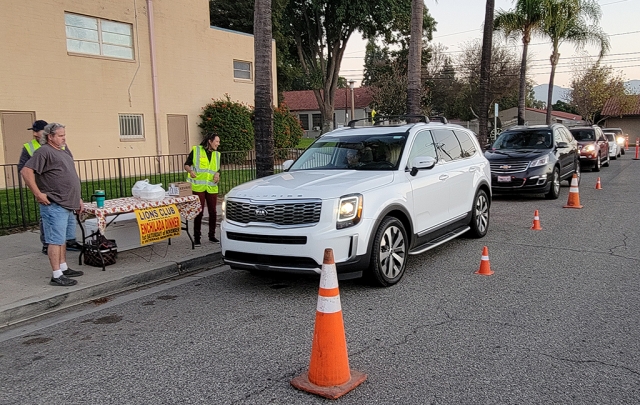 On Saturday, November 6th, the Fillmore Lions Club hosted their Annual Enchilada Dinner from 5pm to 7pm. Those who purchased tickets drove in front of the Veterans Memorial building and picked up their delicious dinner. Cars lined up around the corner to get their meals, while inside workers were cooking and prepping to-go boxes. Enlarge Photo |
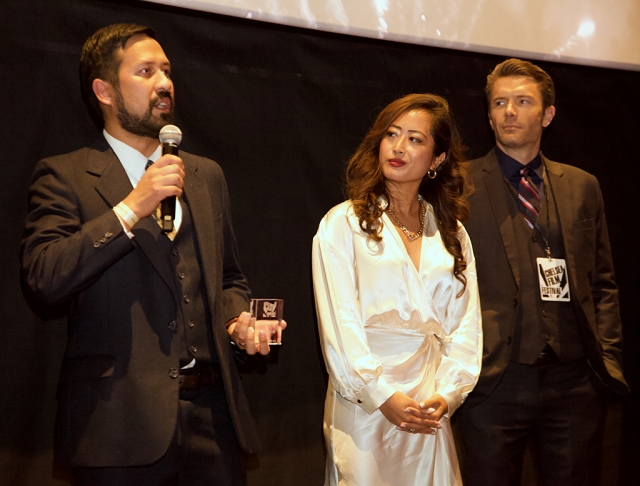 (l-r) FHS Teacher Randal Kamradt, Star Georgina Tolentino, and Co-Star Ian Coleman receiving the Audience Award from the Chelsea Film Festival in New York for his fifteen-minute short film "No Dogs." Enlarge Photo By Gazette Staff Writers — Wednesday, November 10th, 2021
Fillmore resident and Fillmore High School teacher Randal Kamradt has won two awards from the Chelsea Film Festival in New York for his fifteen-minute short film "No Dogs". The film highlights Filipino-American history in the 1930's, telling the suspenseful story of a young woman who spends a night hiding in a diner from racial violence, and was awarded the 'Petite Prix Award for Best Short Film' and the 'Short Film Audience Award'. "No Dogs" stars Georgina Tolentino, who wrote the screenplay with Alex Fabros, and co-stars Ian Coleman, who also won the festival's 'Best Supporting Actor' award. The ceremony took place October 17th, 2021 at the Regal Theatres Union Square, in New York, NY. The film had its World Premiere earlier this month on October 1st, 2021 at the Los Angeles Asian Pacific Film Festival, alongside Kamradt's feature film "The Monsters Without". Since then "No Dogs" has also appeared in Minneapolis at the Twin Cities Film Festival where it was named as a top four finalist among more than seven hundred entries for 'Best Short Film'. "[The] hope for any artist or a filmmaker of color is to gain better exposure for their culture, to further normalize Filipino-American storytelling, and to bring more of my own and my culture’s voice into the cinema" said Kamradt, "It takes a lifetime of work and a lifetime of creating films, before you get to that point where you’re making movies that stand the test of time." "No Dogs" will next be appearing as part of the Philadelphia Asian American Film Festival from November 4th to 14th. The festival will feature virtual screenings so viewers can watch the film from any part of the country. Tickets are available at www.paaff.org |
|
By Gazette Staff Writers — Wednesday, November 10th, 2021
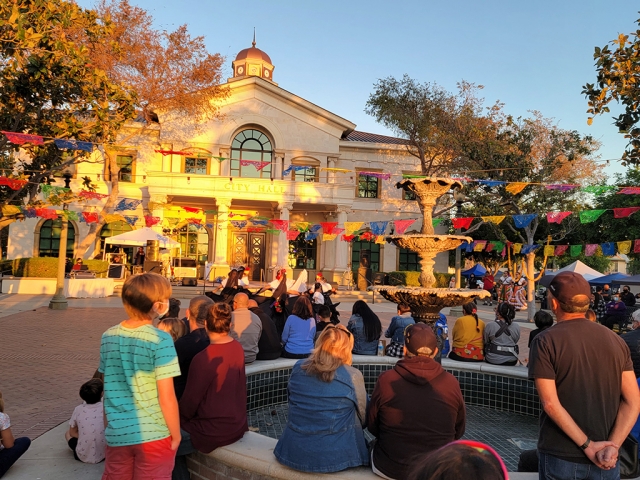 On Tuesday, November 2nd, Fillmore celebrated Dia De Los Muertos in front of City Hall and along Santa Clara Street. Food and shop vendors were set up from 5pm to 9pm. There was live dance and musical performances by Santa Paula Folklorico, Unidos Por La Danza, Luv 2 Dance Studio 1, Xanthe Martinez, Celeste Felix, Oscar Magana, La Lealtad De Nuevo Leon. At 8pm they screened a movie in the park, Disney’s “Coco”, for all to enjoy. Enlarge Photo |

